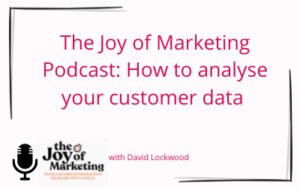In our latest Retail Leaders Forum, David Lockwood, our Insight Director, chaired a discussion with multi-channel retailers about the challenges of the AW21 season, and how it stood out from previous years.
Our last post, Lessons from a unique Autumn/Winter 2021 season part 1, looked at the trends emerging from the season, and how brands should respond. Here, we dig a little deeper into the costs and challenges of particular marketing channels.
Reconsidering paid social
The last quarter of 2021 saw the average search term in paid social channels increase by 42% compared with 2020. This may be partly due to Facebook Ads’ shorter attribution window (in response to Apple’s ATT) beginning to take effect. Previously, data on user actions could be collected for 28 days prior to a conversion, but this is now only seven days. David observed that ad performance dropped by about 32% uniformly across all businesses after the change, so this seemed to partially account for the increased paid social cost.
One female fashion retailer found Facebook’s seven-day attribution window impacted their ads as it dampened their measurement of performance, resulting in decisions which led to less efficient campaigns. This highlights the importance of performing lag testing to determine product consideration windows.
Meanwhile, a sustainable clothing company said the situation made them rethink their whole channel mix. They are now considering moving towards offline channels such as radio ads, since visibility is more cost-effective and incrementality testing can be carried out on a regional basis.
Dealing with cost pressures and availability
In addition to more expensive online acquisition, retailers also faced increased costs in many other areas, including production, paper and printing, packaging, transportation and delivery, and staffing. Despite a sales increase during AW21, revenue gains were offset by catastrophic margins for some, owing to labour shortages and diminished production during the winter Covid season.
Low transport availability also took a toll. Almost all retailers found that shipping into the UK was constrained, resulting in stock shortages and delivery delays. For example, one comfort footwear retailer experienced stock levels approximately 35% below normal. Not only did longer delivery times risk damaging brands’ customer satisfaction – and therefore possibly retention – but they also made it difficult for some companies to meet product line launch dates, such as in the case of one illustrated book brand. This underscores the need for businesses to remain agile and be prepared to react to a changing retail landscape.
A break in the paper chain
Paper and printing costs rose in response to insufficient supply throughout 2021. And this worsened during the Autumn-Winter period, when delays continually increased. After historically being able to order paper around four weeks before beginning a catalogue campaign, businesses were forced to order about four months ahead during AW21. In turn, catalogue delivery delays resulted in customers placing orders later, which contributed to the peak sales period moving further into December. Marketing measurement also suffered, since delayed paper-based campaigns ran asynchronously with other channels.
One book retailer found a way to partially compensate by emphasising collectors’ editions over discount offers. With limited numbers of the special editions, the business was able to substitute the offer deadline with a self-regulating demand deadline. This meant that customer orders never outstripped supply.
Meanwhile, a gifting company, which had conventionally sent out their Christmas catalogue in conjunction with an email campaign, found the absence of their catalogue hardly affected performance. They are now considering scaling back their catalogue circulation in future. Again, this highlights the need for retailers to remain agile when it comes to logistics, but also to experiment with their channel mix.
AW21 brought plenty of consumer demand, but trade was hampered by multiple cost pressures and logistical issues. While this has resulted in a rocky period for multi-channel retailers, the ability to be responsive, test, and quickly adjust strategy will certainly help retailers succeed in 2022.




